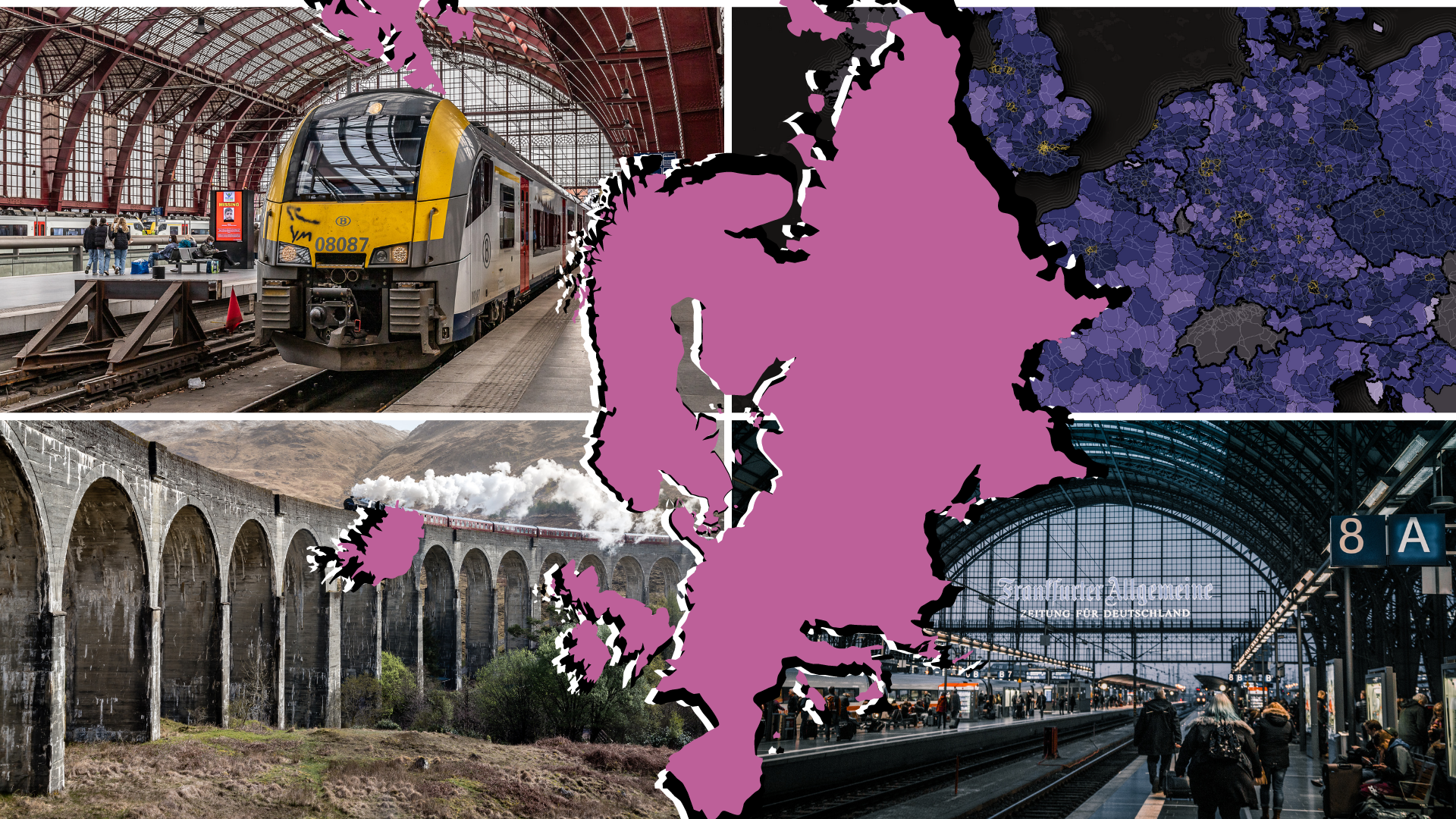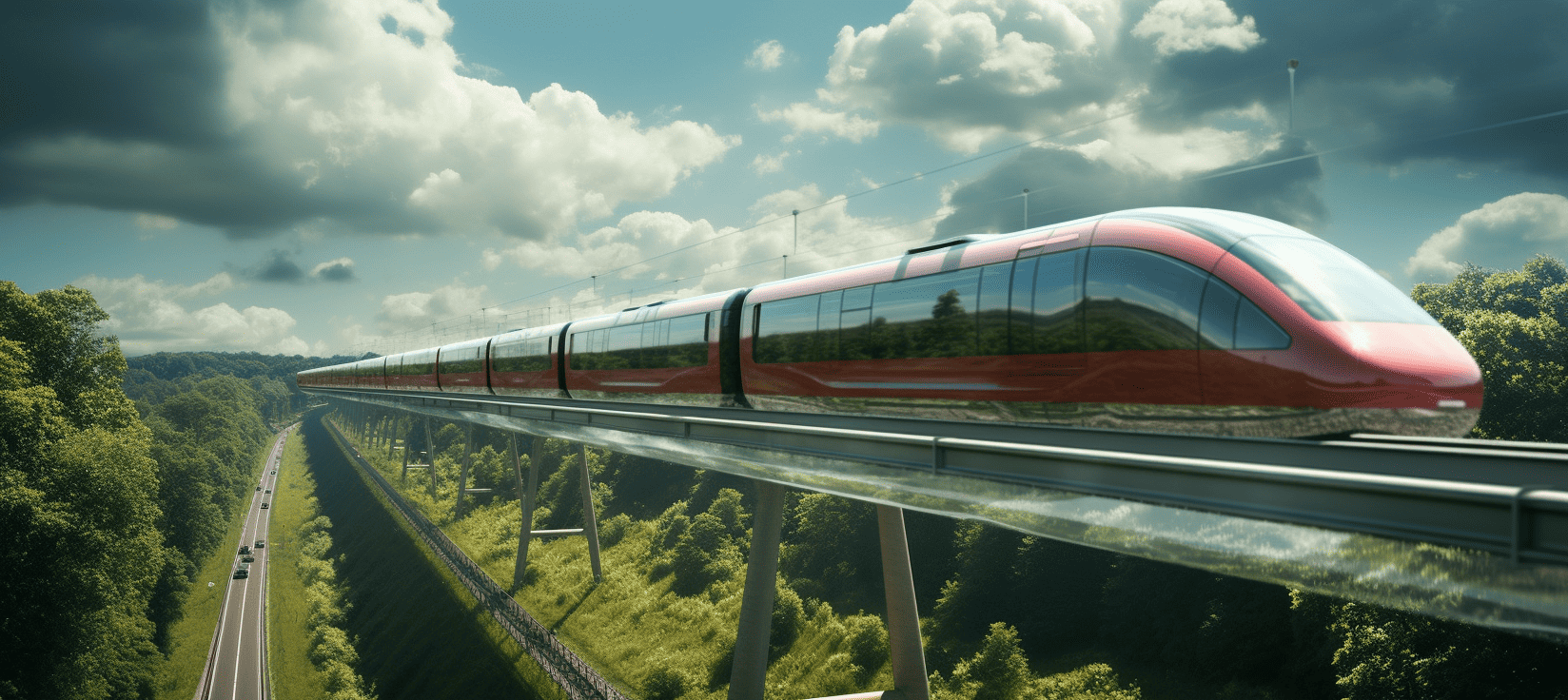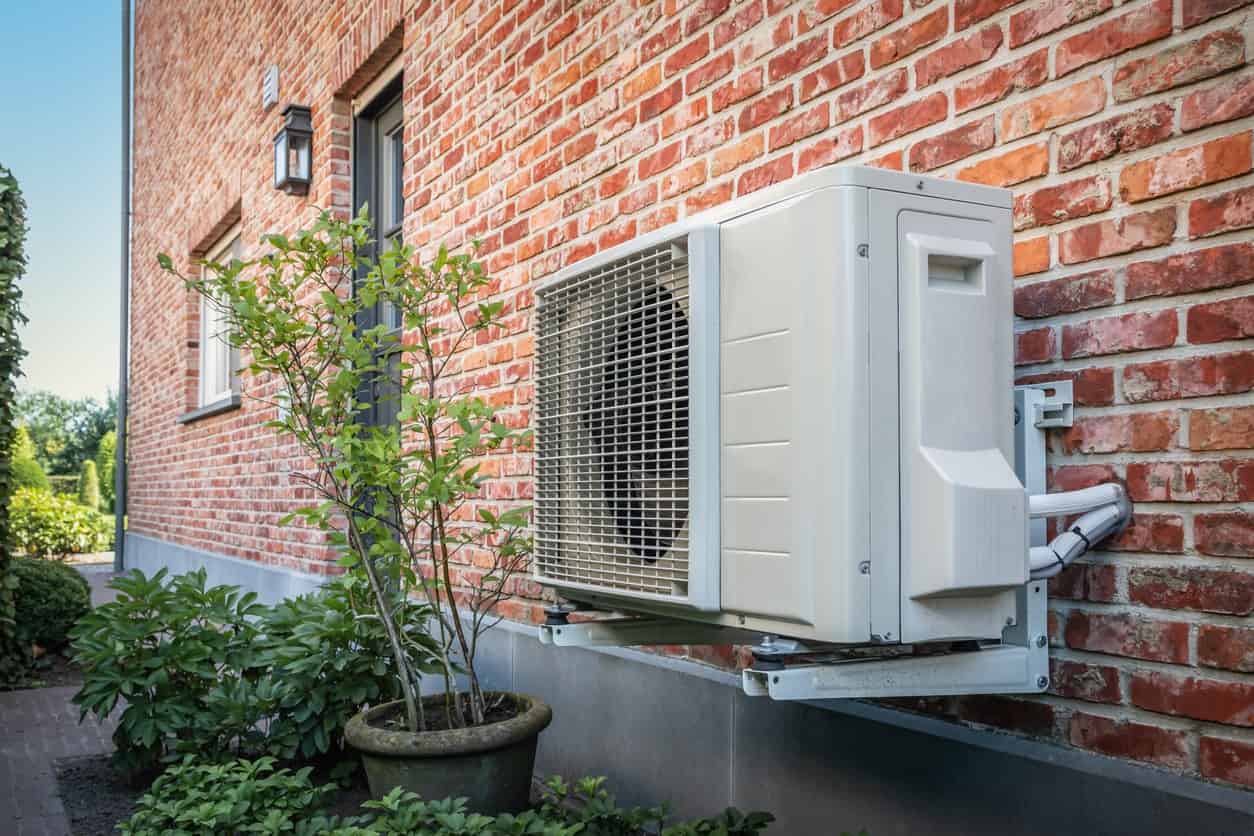
Which European country has its act together the most in terms of sustainability? The answer is fairly nuanced and depends on what you are focusing on. After electricity and heat were put under the microscope in the first two instalments of this series, the time has now come for transport. Roads were the focus last time. In this two-parter, railways take the lead role.
Let’s start with the regular railway network without any high-speed gadgetry. In the 19th century, the countries of Europe were the first to build a comprehensive railway network. Almost 200 years later, this is still the case. Nowhere in the world can you get to as many places by train as you can in Europe. This becomes immediately clear after a glance at this very comprehensive railroad map. It not only includes all railroad lines that serve passenger transport. The number of residents living less than 5km from a train station can also be seen by the shaded purple areas. In the yellow shaded areas, the entire population lives within a reasonable distance of a railway station.

Overhead lines or Diesel engine
Rail transport is generally considered a greener way to get from A to B than by car. If it is up to the sustainability ambitions of the European Union, as many railroads as possible should be electrified in the near future. However, not everything is in place yet. Particularly in Central and Eastern Europe, polluting diesel-powered trains dating from last century are still chugging along, while in other places, investments have been made in more comfortable and greener forms of electric transport.
In the Czech Republic, almost everyone could be living close to a train station. The railway operators there are not exactly green, what with scarcely more than a third of the routes being suitable for the cleaner electric trains. Among the richer countries, the mediocre percentages of Denmark, the United Kingdom and Ireland are particularly conspicuous.
By 2020, Switzerland had electrified all of its railways. Sweden, Belgium and the Netherlands are also among the continental frontrunners when it comes to overhead lines. For success stories on the other side of Europe, we have to visit Bulgaria or Montenegro. Despite their lower standards of living, these countries are on the ‘Western European level’ as far as overhead lines over railroads are concerned.
Green transport
Transport is one of the three sub-figures Eurostat uses to measure the sustainability of member states. Although this instalment is focused on rail transport, this third map sketches the situation in a broader context. How big is the ‘sustainable source’ proportion if you factor in trucks, passenger cars, ships and freight trains?
The percentages overlap slightly. Countries like Sweden, Norway and the Netherlands are also among the continental leaders here. In Poland, railroads are fairly sustainable, while other forms of transport evidently rely much more on fossil fuels.
The most fanatical train commuters
Of course, what makes rail transport successful is not just its infrastructure. After all, an immense railway network is not particularly useful if it is barely used or if a train passes over it less than once every hour. In an ideal scenario, public transport forms a worthy – or even better – alternative to the car for trips. Whether for work or for family visits, every car trip that can be avoided is a gain, viewed purely from a green perspective.
Europe’s most fanatical rail travelers live in Finland, where the number of boarding and disembarking passengers per 24 hours is equivalent to more than 13 percent of its population. You can check the figures for all countries in this table. Since reliable data on travelers could not be collected on account of the corona crisis, Eurostat data from the fourth quarter of 2019 have been used here.
Delays and disruption
Complaining about the poor service of the national railroad operator is considered a real national sport in many EU countries. Almost everyone claims that their own country definitely makes the biggest mess of things. However, the European rail association IRG-Rail, whose members include train operators from 31 countries, does not conduct research based on gut feelings, but on clocks and arrival times.
How many train journeys arrived at their final destination with less than a five-minute delay? They mapped that out a few years ago in their annual Rail Monitor Report. Given that no train passenger is keen on delays, this data is a fairly accurate glimpse into the quality of service.
So where do the least delays occur? Somewhat surprisingly: in the Baltic States, where Lithuania and Latvia are the envy of everyone with 96 and 98 percent trips on time respectively. More than nine out of ten train trips also arrive on time in the Netherlands, Spain and Norway. Slovenia and Greece have the highest likelihood of delays. Just over one in three Greek train passengers arrived at their final destination without any delays in 2018.
Earned their spurs?
Where are the greenest and best railway companies in Europe? That largely depends on how you look at it. In the Czech Republic, most people live close to a train station. Still, they will have to settle for slow trains that are not likely to be used too intensively.
Viewed purely from a sustainability perspective, Switzerland (due to its high percentage of electrified tracks) and Finland (due to its high percentage of rail passengers) are the leaders. A good all-rounder that scores above average on all fronts is the Netherlands. Followed closely by Denmark, Norway and Austria. It seems that everything is even more efficient in Switzerland, but since this country is not a member of the European Union, the amount of available data can only be described as meager.
In some countries, catching the train can hardly be called a viable option because of poor timetables, uncomfortable material and huge likelihood of delays. Even though many Eastern European countries score anything but strongly in this respect, the state of the railways in Greece most resembles that of a Third World country. Among the richer countries, Britain is not doing very well either. And this story has not even factored in skyrocketing ticket prices and the chaos created by privatization.
Next week, railroads will take center stage once again. This time, not the slower moving locomotives, but high-tech, high-speed trains.







